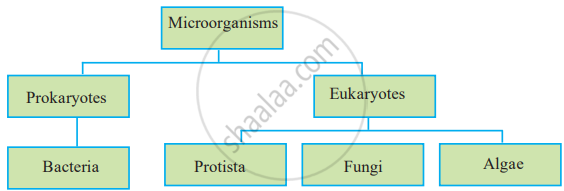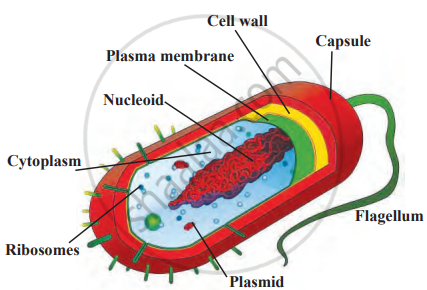Topics
Heredity and Evolution
- Heredity or Inheritance
- Protein Synthesis
- Transcription
- Translation
- Translocation
- Concept of Mutation
- Mutation Theory
- Evolution and Classiffication
- Evidences for Biological Evolution
- Darwinism
- Lamarck’s Theory of Evolution
- Speciation
- Human Evolution
Life Processes in Living Organisms Part -1
- Living Organisms and Life Processes
- Living Organisms and Energy Production
- Production of ATP
- Types of Respiration: Aerobic and Anaerobic Respiration
- Energy From Different Food Components
- Cell Division: an Essential Life Process
- Mitosis and Its Phases
- Phases of Mitosis: Karyokinesis (Division of Nucleus)
- Phases of Mitosis: Cytokinesis (Division of Cytoplasm)
- Significance of Mitosis
- Meiosis as a Reduction Division
- Stages of Meiosis: Meiosis I
- Stages of Meiosis: Meiosis II
- Significance of Meiosis
- Differences Between Mitosis and Meiosis
Life Processes in Living Organisms Part - 2
- Introduction to Life Processes in Living Organisms
- Reproduction
- Asexual Reproduction in Animal
- Fission
- Fragmentation
- Regeneration
- Budding
- Sporulation (Sporogenesis)
- Asexual Reproduction in Plant
- Budding
- Vegetative Reproduction
- Sexual Reproduction in Flowering Plants
- Sexual Reproduction in Animals
- Human Reproduction
- The Male Reproductive System
- The Female Reproductive System
- Gametogenesis
- Fertilization in Human
- Embryonic Development in Human
- Implantation in Human
- Pregnancy in Humans
- Placenta (Growth) in Human
- Parturition (Birth) in Human
- Menstrual Cycle (Ovarian Cycle)
- Reproduction and Modern Technology
- Reproductive Health
Environmental Management
- Our Needs and the Environment
- Ecosystem
- Relationship Between Environment and Ecosystem
- Environmental Balance
- Environmental Conservation
- Environmental Conservation and Biodiversity
- Classification of Threatened Species
Towards Green Energy
- Energy and Use of Energy
- Generation of Electrical Energy
- Power Plants Based on Thermal Energy
- Power Plants Based on Nuclear Energy
- Power Plants Based on Natural Gas
- Electric Energy Generation and Environment
- Electricity Generation using Hydroelectric Energy
- Electricity Generation using Wind Energy
- Electricity Generation using Solar Energy
Animal Classification
- Biological Classification
- Classification of Living Organisms
- History of Animal Classification
- Traditional Method of Animal Classification
- Conventional System of Animal Classification
- Criteria for New System of Classification
- Phylum: Porifera
- Phylum: Cnidaria/Coelenterata
- Phylum: Platyhelminthes
- Phylum: Aschelminthes
- Phylum: Annelida
- Phylum: Arthropoda
- Phylum: Mollusca
- Phylum: Echinodermata
- Phylum: Hemichordata
- Phylum: Chordata
- Subphylum: Urochordata
- Subphylum: Cephalochordata
- Subphylum -Vertebrata/Craniata
- Class: Cyclostomata
- Class: Pisces
- Class: Amphibia
- Class: Reptilia
- Class: Aves
- Class: Mammalia
Introduction to Microbiology
- Microorganisms (Microbes) and Microbiology
- Introduction to Applied and Industrial Microbiology
- Microbial Role in Dairy Products
- Probiotics
- Yeast and Microbes in Bread Making
- Vinegar Production
- Microbial Enzymes
- Antibiotics
- Microbes and Fuels
- Bio-fuel
- Microbial Pollution Control
- Microbes and Farming
Cell Biology and Biotechnology
- Cell Biology (Cytology)
- Stem Cells
- Organ Transplantation
- Organ and Body Donation
- Biotechnology
- Commercial Applications of Biotechnology
- Modern Agricultural Practices and Crop Improvement
- Important Stages in Agricultural Development
- Stem Cell Research
- Crop Biotechnology
- Hybrid Seeds
- Genetically Modified Organisms (GMOs)
- Biofertilizers
- Animal Husbandry (Livestock)
- Human Health
- Vaccines and Vaccination
- Edible Vaccines
- Treatment
- Interferons
- Gene Therapy
- Cloning
- Industrial Products/White Biotechnology
- Environment and Biotechnology
- Food Biotechnology
- DNA Fingerprinting Technique
- Green Revolution
- White Revolution
- Blue Revolution
- Fertilizers
- Insecticides
- Organic farming
- Apiculture (Bee Farming)
- Cultivation of Medicinal Plants
- Processing and Preservation of Fruits
Social Health
- Introduction to Social Health
- Factors Disturbing the Social Health
- Communication Media and Excessive Use of Modern Technology
- Concept of Cyber Crime
- Stress Management
Disaster Management
- Disaster
- Effects of Disaster
- Nature and Scope of Disaster
- Disaster Management
- Classification of Disaster Management
- Disaster Management Cycle
- Structure of Disaster Management Authority
- First Aid and Emergency Action
- Mock Drill
Life's Internal Secrets
The Regulators of Life
- Coordination in Plants - Introduction
- Control and Co-ordination in Plants
- Human Nervous System
- Central Nervous System (CNS)
- Chemical Control
The Life Cycle
Mapping Our Genes
Striving for Better Environment 2
- Use of Efficient and Eco-friendly Technology
- Sustainable Use of Resources
- Enforcement of Acts, Laws and Policies
Understanding Metals and Non-Metals
Amazing World of Carbon Compounds
- Introduction of Microorganisms
- Types of Microorganisms
- Classification of Microorganisms
- Experiment
- Nature of microorganisms
- Growth of microorganisms
Introduction of Microorganisms:
Microorganisms are tiny living organisms invisible to the human eye. They can only be observed using a microscope. The cell has four main parts: the cell wall, cell membrane, cytoplasm, and cell organelles. Microorganisms are present all around us in the air, water, soil, food, sewage, and garbage, as well as in the bodies of plants and animals, including humans.
Types of Microorganisms:
| Types | Description | Examples | Role |
|---|---|---|---|
| Solitary Micro-organisms | These microorganisms live alone and perform all life processes independently. | Amoeba, Paramecium | Survive alone without needing other organisms. |
| Colony Micro-organisms | These microorganisms live in groups or colonies where cells live together but still function independently. | Volvox, Anabaena | Provides protection and survival advantages, especially in tough environments. |
| Decomposers | Microorganisms that break down dead plants and animals, converting them into nutrients for the soil. | Fungi, Bacteria | Essential for recycling nutrients and preventing waste accumulation in ecosystems. |
Classification of Microorganisms:
Among the living organisms, microorganisms are the largest in number. Hence, they are classified as follows:

Classification of Microorganisms
With reference to the size of microbes, remember:
1 meter = 106 micrometres (µm)
1 meter = 109 nanometres (nm)
Experiment
1. Aim: To observe microorganisms in different environments using a magnifying lens or microscope.
2. Requirements: moistened bread or bhakari, a closed box, muddy water or water from a stagnant puddle, yoghurt or buttermilk, glass slides and cover slips, a compound microscope, and a magnifying lens.
3. Procedure
- Bread Experiment: Place a moistened piece of bread or bhakari in a closed box. Observe it with a magnifying lens to check for mould growth after 3-4 days.
- Water Sample Observation: Place a drop of muddy or stagnant water on a glass slide, cover with a cover slip, and observe under the compound microscope.
- Yoghurt/Buttermilk Observation: Place a drop of yoghurt or buttermilk on a glass slide, cover it with a cover slip, and observe under the microscope.
- Recording observations: Draw sketches of the observed microorganisms in your notebook.
4. Conclusion
- Bread/Bhakari: Mould or fungal growth develops after a few days due to microorganisms.
- Muddy Water: Tiny protozoa and bacteria can be seen moving under the microscope.
- Yoghurt/Buttermilk: Lactobacillus bacteria are visible and responsible for curd formation.
Nature of microorganisms:
Microorganisms are tiny living organisms invisible to the human eye. They come in different types:
- Multicellular Microorganisms: Some microorganisms, like the mould (fungus) on bread or algae in ponds, are made up of many cells working together. These are similar to larger plants and animals but much smaller in size.
- Unicellular Microorganisms: Most microorganisms, like bacteria and viruses, are made of only one cell. They are called unicellular organisms because they perform all life functions in just one cell. Bacteria are prokaryotic cells, meaning they don’t have many complex parts like those found in plant or animal cells. The plasma membrane, cytoplasm and nucleoid are their only components.

Prokaryotic cell
Growth of microorganisms:
Microorganisms need the right environment to grow and reproduce. Different types of microorganisms have different needs:
1. Oxygen requirement: Some microorganisms need oxygen to grow. Others can grow without oxygen.
2. Surviving Extreme Conditions: Some microorganisms live in harsh environments like
- The ocean floor
- Ice in the polar regions
- Hot springs
3. Protective Covering During Adverse Conditions: When conditions become unfavourable, microorganisms form a thick protective covering around themselves. They pause their life processes (like sleeping). When conditions become favourable again, they come out of the covering and resume their activities.
Where do the microorganisms grow?
Medium: Soil, water, decaying matter, etc.
Temperature : 25°C - 37°C
Nutrition: specific nutrients, e.g., algae-chlorophyll, oxygen.
Atmosphere: Moist, humid, warm
Related QuestionsVIEW ALL [45]
Find out my partner
| A | B |
| Fungi | Chlorella |
| Protozoa | Bacteriophage |
| Virus | Candida |
| Algae | Amoeba |
| Bacteria | Prokaryotic |
